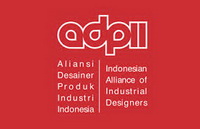Peran aktivitas reverse engineering pada Jurusan Teknik dan Desain di perguruan tinggi
Abstract
Product design is a complex activity because it is a cross of various fields. Lecturing this activity in universities is also a challenge for lecturers because these activities require not only knowledge but also experience. On the other hand, the industry expects human resources that are compatible with industrial standards. The Reverse Engineering (RE) method is one solution to this problem. This qualitative-descriptive research with the literature study method aims to determine the role of reverse engineering in engineering and design education, especially in product design subject. The author conducted the study from the book and science journal source to define the aspect related to RE activity in engineering and design education. According to this research, it can be concluded that the RE method has a role in providing knowledge about various aspects of the design of some products through the practice of disassembling and evaluating existing products. Then this method also has a role in providing knowledge through practice in designing a product. Various equipment, both hardware and software are required in this method. The challenges that arise are related to the limited cost of procuring sample products and workshop facilities and limited lecture time.
Keywords
Full Text:
PDFReferences
Akerdad, M., Aboutajeddine, A., & Elmajdoubi, M. (2020). Supporting product development activities by reverse engineering technique. In Proceedings of the International Conference on Industrial Engineering and Operations Management. IEOM Society.
Akerdad, M., Aboutajeddine, A. & Elmajdoubi, M. Reverse engineering canvas (REC): a visual tool for supporting reverse engineering activities. Int J Interact Des Manuf 15, 249–257 (2021). https://doi.org/10.1007/s12008-021-00763-3
Anggoro, P. W., Tan Wijaya, A. R., Yuniarto, T., Bayuseno, A. P., Jamari, J., Tauviqirrahman, M., & Setyohadi, D. B. (2021). Reverse engineering from 3D mesh to ceramic product in the form of miranda kerr tea for one teapot in PT doulton Indonesia. Cogent Engineering, 8(1). https://doi.org/10.1080/23311916.2021.1981522
Barr, R., Krueger, T., Wood, B., & Pirnia, M. (2014). Introduction to engineering design through a freshman reverse engineering team project. Proceedings of the 6th Annual FYEE.
Calderon, M. L. (2010). Application of reverse engineering activities in the teaching of engineering design. In 11th International Design Conference, DESIGN 2010 (pp. 1249–1258)
Creswell, J. W. (2014). Research Design: Qualitative, Quantitative, and Mixed Methods Approaches (4th ed.). California: SAGE Publications, Inc. https://doi.org/10.1007/s13398-014-0173-7.2
Daywin, F. J., Doaly, C. O., Gozali, L., Kosasih, W., & Guswiyanta. (2020). Improving the quality of coffee shops in jabodetabek area by application and modification of coffee roaster machine capacity 400-600 gram coffee beans using the reverse engineering and engineering design method. In IOP Conference Series: Materials Science and Engineering (Vol. 1007). IOP Publishing Ltd. https://doi.org/10.1088/1757-899X/1007/1/012132 Application and Modification of Coffee Roaster Machine Capacity 400-600 Gram Coffee Beans Using the Reverse Engineering and Engineering Design Method. Indonesia: Universitas Tarumanagara
Dieter, G. E., & Schmidt, L. C. (2021). Engineering design (Sixth Edition). Boston: McGraw-Hill Higher Education.
Jovanović, V. (2011). Reverse engineering as a product design tool. In Proceedings of the XV international scientific conference on industrial systems (IS’11). IS, Novi Sad (pp. 66-70).
Junk, S., & Matt, R. (2014). New approaches to the application of additive manufacturing and reverse engineering in design education. In Proceedings of NordDesign 2014 Conference, NordDesign 2014 (pp. 105–114). Aalto University.
Messler Jr, R. W., & FAWS, P. D. F. (2014). Reverse engineering: Mechanisms, structures, systems & materials. McGraw-Hill Education.
Nusantara, E. (2016). Monozukuri Rahasia Mencapai Produk Berkelas Dunia. Penerbit Pena Nusantara.
Rad, H. (2012). Reverse engineering as a learning tool in design process. In ASEE Annual Conference and Exposition, Conference Proceedings. American Society for Engineering Education. https://doi.org/10.18260/1-2--21887
Raja, Vinesh; Fernandes, Kiran J. (2008): Reverse Engineering: Industrial Perspective. United Kingdom: Springer-Verlag.
Saiga, K., Ullah, A. S., & Kubo, A. (2021). A Sustainable Reverse Engineering Process. Procedia CIRP, 98, 517-522.
Sha, L. (2011). The Innovation Design of Product Based on Reverse Engineering. In 2011 International Conference on Computer Science and Information Technology (ICCSIT 2011). IPCSIT (Vol. 51).
Wibowo, B. D. (2006). Memahami Reverse Engineering Melalui Pembongkaran Produk Di Program S-1 Teknik Mesin. Teknik Mesin, UNDIP, 4(1), 20–31.
Wang, P., Yang, J., Hu, Y., Huo, J., & Feng, X. (2021). Innovative design of a helmet based on reverse engineering and 3D printing. Alexandria Engineering Journal, 60(3), 3445–3453. https://doi.org/10.1016/j.aej.2021.02.006
Xia, Z. (2014). Application of reverse engineering based on computer in product design. International Journal of Multimedia and Ubiquitous Engineering, 9(5), 343–354. https://doi.org/10.14257/ijmue.2014.9.5.35
Ye, X., Liu, H., Chen, L., Chen, Z., Pan, X., & Zhang, S. (2008). Reverse innovative design—an integrated product design methodology. Computer-aided design, 40(7), 812-827.
DOI: https://doi.org/10.24821/productum.v5i2.7749
Refbacks
p-ISSN 2477-7900 | e-ISSN 2579-7328

This work is licensed under a Creative Commons Attribution 4.0 International License.
Like & Follow Us










